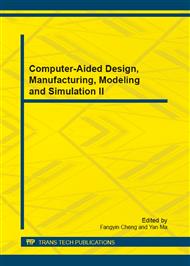p.7
p.12
p.17
p.22
p.28
p.33
p.37
p.43
p.47
Interference Uniformity Analysis Based on the Clearance between the Hole and Rivet
Abstract:
The riveting quality has an important influence on the performance of the aircraft structure. The amount of interference can be an important indicator of the quality of riveted structure. The relationship between the clearance between rivet and hole and uniformity of interference is researched theoretically and experimentally against the aviation panel riveted structure. First, the riveting deformation stages are divided, and the deformation law is theoretically analyzed. The test scheme is designed and carried out based on the actual situation. Then, the experiment result is monitored and compensated. Finally, the relationship between the clearance between rivet and hole and uniformity of interfere is given out with the slope of interference as the uniform evaluation index.
Info:
Periodical:
Pages:
28-32
Citation:
Online since:
December 2012
Authors:
Price:
Сopyright:
© 2013 Trans Tech Publications Ltd. All Rights Reserved
Share:
Citation:


